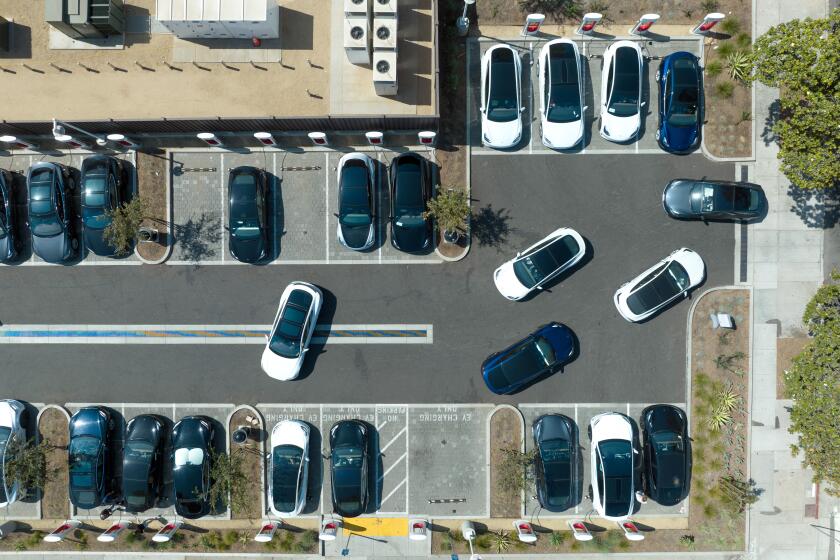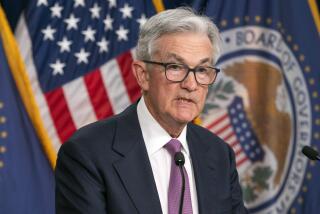How do we know when a recession has begun?

The government on Thursday updated its estimate of the U.S. economy’s performance in the April-June quarter and confirmed what it had reported last month: That the economy shrank for two straight quarters.
Six months of contraction is a long-held informal definition of a recession. Yet nothing is simple in the post-pandemic economy. Growth may be negative, but the job market is strong. The economy’s direction has confounded Federal Reserve policymakers and many private economists since growth screeched to a halt in March 2020 as the COVID-19 pandemic struck and 20 million Americans were suddenly thrown out of work.
Even as the economy shrank over the first half of this year, employers added 2.7 million jobs — more than in most entire years before the pandemic struck. In July, the economy added more than a half-million additional jobs. The unemployment rate sank to 3.5%, a half-century low. Robust hiring and exceedingly low unemployment aren’t consistent with a recession.
Although most economists — and Fed Chair Jerome H. Powell — have said they don’t think the economy is in recession, some analysts still predict that an economic downturn will begin later this year or next.
Plenty of challenges lie ahead as California mandates zero-emission cars, including cost and access to charging.
Either way, inflation remains near its highest level in four decades, though gas costs and other prices have eased in recent weeks. Inflation is still so high that despite the pay raises many have received, Americans’ purchasing power is eroding. The pain is being felt disproportionately by lower-income and Black and Hispanic households, many of whom are struggling to pay for higher-cost essentials such as food, gas and rent.
Compounding those pressures, the Fed is jacking up interest rates at the fastest pace since the early 1980s, thereby magnifying borrowing costs for homes, cars and credit card purchases. As a result, regardless of whether a recession has officially begun, Americans have soured on the economy.
So how, exactly, do we know when an economy is in recession? Here are some answers to such questions:
Who decides when a recession has started?
Recessions are officially declared by the obscure-sounding National Bureau of Economic Research, a group of economists whose Business Cycle Dating Committee defines a recession as “a significant decline in economic activity that is spread across the economy and lasts more than a few months.”
The committee considers trends in hiring as a key measure in determining recessions. It also assesses many other data points, including gauges of income, employment, inflation-adjusted spending, retail sales and factory output. It puts heavy weight on jobs and a gauge of inflation-adjusted income that excludes government support payments such as Social Security.
Yet the NBER typically doesn’t declare a recession until well after one has begun, sometimes for as long as a year. Economists consider a half-point rise in the unemployment rate, averaged over several months, as the most historically reliable sign of a downturn.
Do two straight quarters of contraction equal a recession?
That’s a common rule of thumb, but it isn’t an official definition.
Still, in the past, it has been a useful measure. Michael Strain, an economist at the right-leaning American Enterprise Institute, has noted that in each of the last 10 times that the economy shrank for two consecutive quarters, a recession has resulted.
Still, many economists doubt that we’re in a recession now. For one thing, there’s the robust job market. For another, Americans are still spending, if more tepidly. Though purchases of goods such as appliances and furniture have dropped, spending on services, including airline trips and dinners out, keeps rising, indicating that millions of consumers are venturing out more.
Don’t a lot of people think a recession is coming?
Yes, because many people now feel more financially burdened. With wage gains trailing inflation for most people, higher prices for such essentials as gas, food and rent have eroded Americans’ spending power.
Walmart has reported that higher gas and food costs have forced its shoppers to reduce their purchases of discretionary items such as new clothing, a clear sign that consumer spending, the leading driver of the economy, is weakening. The nation’s largest retailer, Walmart has reduced its profit outlook and said it would have to discount more items such as furniture and electronics.
And the Fed’s rate hikes have helped send the average 30-year fixed mortgage rate up to 5.13%, compared with 2.86% a year ago, making home buying increasingly unaffordable.
Higher rates probably will weigh on businesses’ willingness to invest in new buildings, machinery and other equipment. If companies reduce spending and investment, they’ll also start to slow hiring. Rising caution among companies about spending freely could lead eventually to layoffs. If the economy were to lose jobs and the public were to grow more fearful, consumers would further reduce spending.
The Fed’s rapid rate hikes have raised the likelihood of a recession in the next two years to nearly 50%, Goldman Sachs economists have said. And Bank of America economists now forecast a “mild” recession later this year, while Deutsche Bank expects a recession early next year.
What are some signs of an impending recession?
The clearest signal that a recession is underway, economists say, would be a steady rise in job losses and a surge in unemployment. In the past, an increase in the unemployment rate of three-tenths of a percentage point, on average over the previous three months, has meant that a recession will soon follow.
Many economists monitor the number of people who seek unemployment benefits each week, which indicates whether layoffs are worsening. Weekly applications for jobless aid, averaged over the last four weeks, are just below 250,000, the highest level since last November. Although that is a potentially concerning sign, it is still a low level historically.
Anything else to watch for?
Many economists also monitor changes in the interest payments, or yields, on different bonds for a recession signal known as an “inverted yield curve.” This occurs when the yield on the 10-year Treasury falls below the yield on a short-term Treasury, such as the three-month T-bill. That is unusual. Normally, longer-term bonds pay investors a richer yield in exchange for tying up their money for a longer period.
Inverted yield curves generally mean that investors foresee a recession that will compel the Fed to slash rates. Inverted curves often predate recessions. Still, it can take 18 to 24 months for a downturn to arrive after the yield curve inverts.
For the last several weeks, the yield on the two-year Treasury has exceeded the 10-year yield, suggesting that markets expect a recession soon. Many analysts say, though, that comparing the three-month yield with the 10-year has a better recession-forecasting track record. Those rates are not inverted now.
Will the Fed keep raising rates even if the economy slows?
The economy’s flashing signals — slowing growth with strong hiring — have put the Fed in a tough spot. Fed chief Powell is aiming for a “soft landing,” in which the economy weakens enough to slow hiring and wage growth without causing a recession and brings inflation back to the Fed’s 2% target.
But Powell has acknowledged that such an outcome has grown more difficult to achieve. Russia’s invasion of Ukraine and China’s COVID-19 lockdowns have driven up prices for energy, food and many manufactured parts in the U.S.
Powell has also indicated that if necessary, the Fed will keep raising rates even amid a weak economy if that’s what’s needed to tame inflation.
“Is there a risk that we would go too far?” Powell said recently. “Certainly there’s a risk, but I wouldn’t agree that’s the biggest risk to the economy. The biggest mistake to make … would be to fail to restore price stability.”
More to Read
Inside the business of entertainment
The Wide Shot brings you news, analysis and insights on everything from streaming wars to production — and what it all means for the future.
You may occasionally receive promotional content from the Los Angeles Times.









